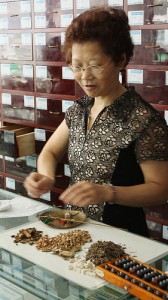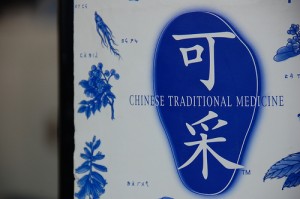China Sector Watch: Pharmaceuticals
 This ongoing series takes an in-depth look at the industries that are shaping the Chinese economy today.
This ongoing series takes an in-depth look at the industries that are shaping the Chinese economy today.
By Joyce Roque
SHANGHAI, Sept. 8 – Last year, when Vicky Zhang got sick with pneumonia she went to a public hospital in Shanghai’s Pudong district. It took her 2 hours to line up for tests and consult with a doctor, who prescribed her medicine from a list found here. The medicine could only be bought from the hospital’s pharmacy. They charged her a total of RMB1,000 which wiped out the credit on her state health insurance card and still required her to pay a small amount. Today, after regular monthly deductions from her white-collar salary, if she were to get sick again her card would only have RMB980 worth of hospital credit.
China’s social welfare system
The exorbitant cost of medical care in China relative to income and the absence of a reliable social net has led the Chinese to become one of the highest savers in the world. As much as 30 to 40 percent of their income is said to be squirreled away every month in anticipation of possible medical costs that gives China a huge savings rate and lesser investment rate.
In contrast, the average American in 2008 had a zero savings rate although that rate has now to 6.9 percent this year because of the global financial crisis. During the thirty years after Deng Xiaoping instituted economic reforms, along with it came the dismantling of free healthcare leaving the majority uninsured.
Up till now, rural residents and migrant workers are still not able to pay for healthcare.“ By 2003, 30 percent of poor households in the government’s National Health Survey were reporting healthcare costs as the main cause of their poverty,” the World Bank said in a report on health reform in China this year.
When the global economic crisis hit last year, China’s exports dropped as a consequence of depressed western markets. It released a massive US$4 trillion stimulus to make up for the loss in exports that accounted for 30-40 percent of the country’s GDP.
The stimulus plan aims to keep the economy afloat by pouring money into infrastructure projects and tax breaks. China also knows it needs to shift its strategy of depending too much on export growth to fuel the economy but now it means that keep to China’s growth on track it may have to look inward and encourage more domestic demand. Theoretically, more domestic demand will only happen in China if incomes rise and people are confident that there will be a dependable social-welfare system to take care of their needs for them to part with their hard-earned cash.
The China Development Research Foundation estimates that the country will need to invest RMB5.74 trillion by 2020 in constructing an all-round social welfare system to enhance people’s lives.
China has so far committed to spending RMB850 billion to do this. Since April, Xinhua says the government has poured in RMB71.6 billion to reach the goal of having 986 county-level hospitals, 3,549 township hospitals, and 1,154 community health centers by the first half of the year.
According to official figures, an estimated 337 million urban residents have already availed of the medical insurance programs, an increase of 19 million compared to last year. Moreover, the number of rural residents insured also increased to 830 million from 670 million. An estimated RMB15.8 billion has been earmarked for basic medical services and to develop a health archives system for the whole population.
The State Council’s Office of Health Care Reform says that one thousand qualified doctors were newly hired in township hospitals this year while 120,000 rural health personnel and 53,000 community health officers received training.
The industry
China’s pharmaceutical industry opened up to the world 30 years ago so it is no surprise that although the Chinese people account for 1 billion of the world’s population, it only produces about one percent of global pharmaceutical supplies. It does not help that the industry is also plagued by corruption, compliance and drug distribution issues that the government has vowed to resolve as part of its ambition to overhaul the industry.
 Western medicine came to China in the 1800s when missionaries where allowed concessions to practice their style of healing and build hospitals. During Mao Zedong’s time and prior to the Cultural Revolution, traditional Chinese medicine (TCM) was initially derided as being old fashioned and dubious just as the Kuomintang government had done before it but eventually became systematized and considered a national treasure, because it offered a way for China to be less dependent on foreign pharmaceutical imports.
Western medicine came to China in the 1800s when missionaries where allowed concessions to practice their style of healing and build hospitals. During Mao Zedong’s time and prior to the Cultural Revolution, traditional Chinese medicine (TCM) was initially derided as being old fashioned and dubious just as the Kuomintang government had done before it but eventually became systematized and considered a national treasure, because it offered a way for China to be less dependent on foreign pharmaceutical imports.
It was during that time that colleges and universities for learning TCM would be set-up with Mao himself prescribing to TCM when he fell ill. In 2005, TCM comprised of one fourth of all medicines sold in the country.
Global pharmaceutical players are expecting the Chinese market to develop with 20 of the world’s top pharmaceutical companies now here in Shanghai. One of the major pharma companies to arrive in the mainland has been Switzerland-based Roche.
The company came to China in 1984 and built its plant a decade later. Roche was the first foreign healthcare company to build an R&D center at Shanghai’s Zhangjiang Hi-Tech Park in 2004. The country serves as one of the company’s fastest growing affiliates with future plans to expand further.
China Briefing spoke to the company’s Corporate Communications Manager in Shanghai, Albert Cao. Cao acknowledged the potential of China’s pharmaceutical market, saying that since the Chinese economy is growing so fast, the company is enjoying the growth.
He said that one of the challenges of doing business in China is fierce competition for talent in the industry. He explained how it was very important that the government invest in pharmaceutical education, adding that this could be, “an area where we need to work together with the government to train more people.”
On China’s healthcare reform, he said that it “was a very good start.” Roche is working towards having more of its products on China’s essential medicine list which translates to more people being able to access their medicine because of higher refunds via the state insurance.
Currently, Roche’s major markets in the country are concentrated on rich coastal cities. As China’s economy matures, distribution may expand from urban to rural areas. The company’s oncology drugs are becoming more well-known with patients looking for better treatment with more efficacy and less side effects despite Roche drugs being more expensive.
Conclusion
 The pharmaceutical industry in China offers many opportunities for growth because it is still relatively young compared to other markets in the world. From thousands of local drug companies during the beginning of this decade, the number whittled down yearly as more competition enters the market and China implements stricter regulations.
The pharmaceutical industry in China offers many opportunities for growth because it is still relatively young compared to other markets in the world. From thousands of local drug companies during the beginning of this decade, the number whittled down yearly as more competition enters the market and China implements stricter regulations.
Cao agrees that the market is not saturated yet and that there are a lot of opportunities. China will need the help of both local and foreign suppliers to manage its pharmaceutical industry and related healthcare system. The opportunities can range from providing medical devices to computer databases to track health information to foreign pharma companies outsourcing their research needs to China.
Due to China’s comparatively lax pharmaceutical industry, it is also more cost effective for foreign pharmaceutical companies to conduct clinical trials for new drugs in the country like what many top global pharma companies like AstraZeneca Novartis, GlaxoSmithKline and Eli Lilly have done.
The industry also benefits from favorable government support and solid infrastructure. Beijing has set a goal of attracting an estimated US$10 billion of the world’s R&D budget by 2010, says Time Magazine.
- Previous Article Tax Clarification on Director’s Fees, 13 Month Salaries
- Next Article Bank of China to Provide Swiss Investment Funds in RMB










